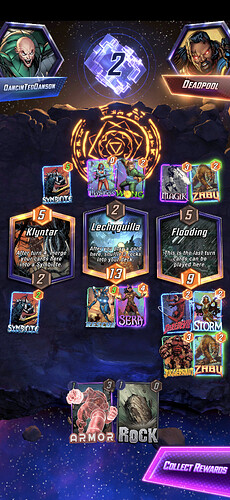Wait now I’m convinced I may be agreeing with what Andy’s saying, just not how he said it, with regard specifically to the base power discussion.
Base power has always existed and been a useful distinction in contrast to ongoing modifiers. Base power generally doesn’t mean “the original power printed on the card”, it means the current static-at-this-moment-in-time power which may have already been modified by the result of previous one-time effects. It only changes when acted on directly and explicitly (whether increased, decreased, or set to a specific value, whatever), whereas the result of ongoing effects can continue to fluctuate in response to actions not specifically targeting the card in question (discards affecting morbius’s ongoing bonus).
Super-Skrull has a base power of 2 to start, plus all ongoing effects of other cards. Let’s say the only other ongoing card is Morbius, and there have been two cards discarded so Morbius has +4, and so will Super-Skrull once played.
Except you play Super-Skrull on Shuri’s lab. The base power of SS (2) is the only part that doubles, giving him a total of 8, not 12. In fact the same thing is clear if you simply play Morbius to Shuri’s lab—he gets no boost from that because his base power is 0, which is doubled to 0, and then his ongoing effect is added.
That meaning of base power has always existed in the game, and it’s the same thing being affected by Valkyrie and the Quantum Realm.
The original power “printed” on the card which I think Andy is calling base power would be better described as the original base power, which is exactly what Shadow King calls it when it reverts cards to their original base power. In that way Shadow King may be unique in being the only effect that references original base power, in this case by reverting current base power to original.
And in that way, I agree with Andy that it certainly seems unlikely a card or location will ever say something like “change the original base power of a card to N”, because that’s like saying “we’ve modified the unmodified value of this”, a bit of a contradiction.
